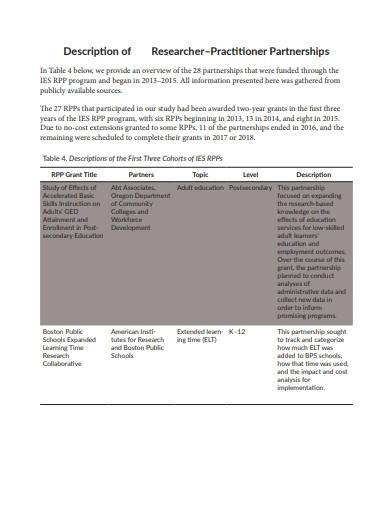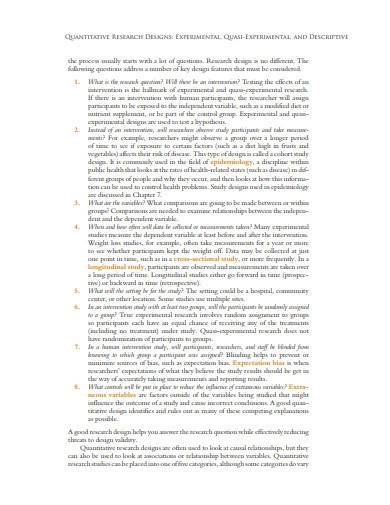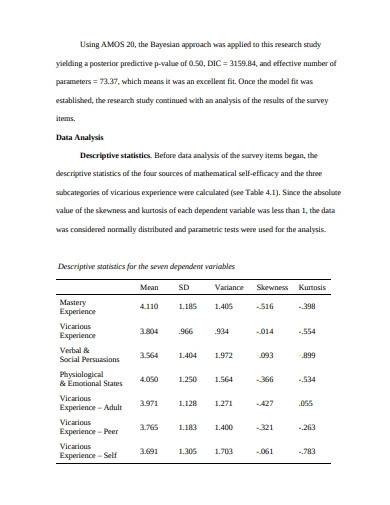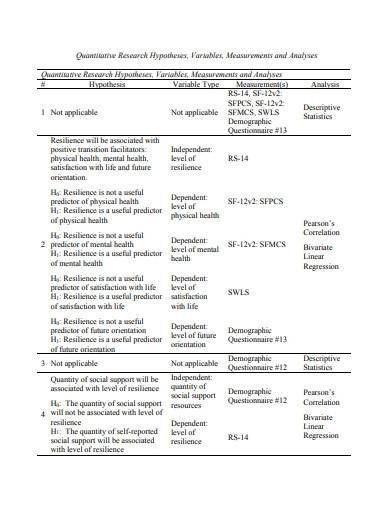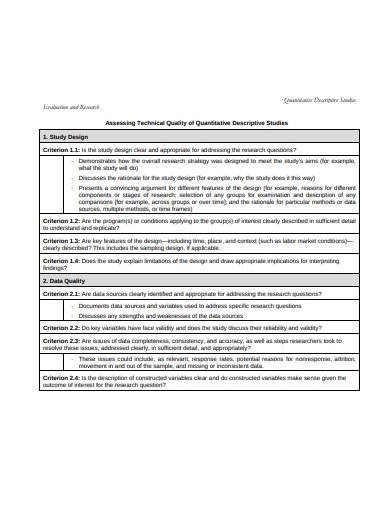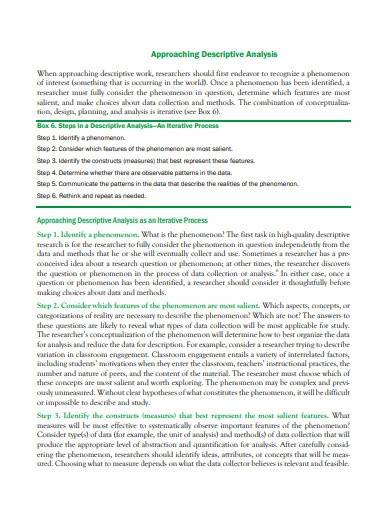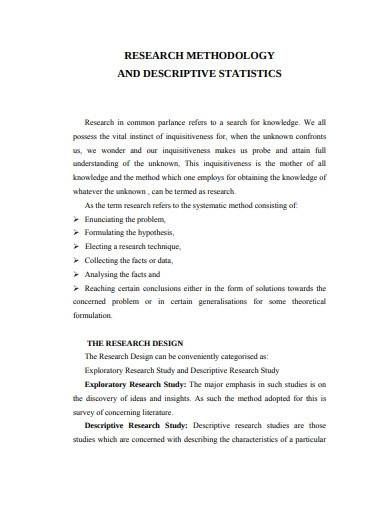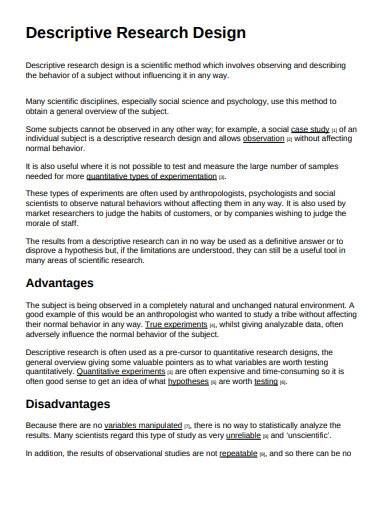One of the main characteristics of descriptive research is its focus on describing the “what”, “where”, “when”, “who”, and “how” of a particular phenomenon or situation. It aims to provide a detailed and accurate portrayal of a specific group, population, or event agenda, and it is often used as a preliminary step before more in-depth documentary research is conducted. Descriptive research is usually conducted when there is limited knowledge or information about a particular topic, and researchers seek to develop a general understanding of it.
FREE 10+ Descriptive Research Samples & Templates in PDF
1. Qualitative & Descriptive Research Template
2. Partnership Description Research Template
3. Descriptive Research Template
4. Quantitative Descriptive Design Research
5. Descriptive Statistics Research Template
6. Qualitative Descriptive Research Template
7. Quantitative Descriptive Analysis Research
8. Descriptive Study Research Template
9. Approaching Descriptive Analysis Research
10. Descriptive Research Statistics Template
11. Descriptive Research Design Sample
What is Descriptive Research?
Descriptive research is a fundamental type of research that seeks to describe and present a comprehensive picture of a phenomenon or situation. This type of research is often used to gain insights into the current state of a particular topic or issue, and it is a crucial tool for researchers in various fields. In this essay, we will explore the key characteristics and steps of descriptive research, as well as their significance in the research process.
How To Make Descriptive Research?
Descriptive research can be conducted using various methods such as event surveys, observation schedule, case study sample, and content analysis. The data collected through these methods are analyzed using statistical analysis, such as mean, median, mode, and frequency distributions, to provide a summary of the findings. If you are interested in conducting a descriptive research study plan, here are some steps that can guide you through the process:
Step 1- Identify Research Question
Start by identifying the specific phenomenon or situation you want to describe. Define the key variables and formulate a research question that you want to answer. Choose a research design that is suitable for your research question and the nature of the phenomenon or situation you want to describe. The most common research designs for descriptive research include surveys, observations, case studies, and content analysis.
Step 2- Develop Sampling Strategy
Determine the population you want to describe and select a sample from that population. The sampling strategy you choose will depend on the research question, the research design, and the available resources. Collect data using the research design you have chosen. For survey questionnaires, you can use online questionnaires, narrative interview report, or paper-based questionnaires. For observations, you can observe and record behaviors in natural settings. For case studies, you can collect data through interviews, observations, and document analysis. For content analysis, you can analyze documents, media, and other sources of information.
Step 3- Analyze Data
Use statistical methods such as mean, median, mode, and frequency distributions to analyze the data you have collected. You can use software such as SPSS, Excel, or R to help you analyze the data.
Step 4- Report Findings
Report your findings using tables, charts, and graphs to help visualize the data and provide a clear understanding of the phenomenon you have described. Provide a summary of your findings and discuss their implications for future research.
What are the methods of descriptive research?
Descriptive research can be conducted using various methods such as surveys, observations, case studies, and content analysis. The choice of method depends on the research question and the nature of the phenomenon being studied.
How is data analyzed in descriptive research?
Data collected through descriptive research is analyzed using statistical methods such as mean, median, mode, and frequency distributions, to provide a summary of the findings. The results of descriptive research are usually presented using tables, charts, and graphs to help visualize the data and provide a clear understanding of the phenomenon being studied.
What are the limitations of descriptive research?
One limitation of descriptive research is that it cannot establish cause and effect relationships. Descriptive research is also limited in its ability to generalize findings to other populations or situations, as it usually involves a specific sample or population. Additionally, descriptive research may be subject to bias or error if the research data collection form methods are not valid or reliable.
Overall, descriptive research is useful for providing a general understanding of a topic or issue and for identifying areas that require further investigation.
Related Posts
FREE 10+ Content Validity Samples & Templates in PDF
FREE 10+ Construct Validity Samples & Templates in MS Word | PDF
FREE 10+ Code of Human Research Ethics Samples & Templates in MS Word | PDF
FREE 10+ Biography Research Report Samples and Templates in PDF
FREE 10+ System Documentation Samples & Templates in MS Word | PDF
FREE 10+ Process Document Samples & Templates in MS Word | PDF
FREE 10+ Action Research Samples & Templates in PDF
FREE 10+ Longitudinal Research Samples & Templates in PDF | MS Word
FREE 10+ Causal Research Samples & Templates in MS Word | PDF
FREE 10+ Client Discovery Samples & Templates in MS Word | PDF
FREE 10+ Null Hypothesis Samples & Templates in MS Word | PDF
FREE 9+ Product Knowledge Samples & Templates in PDF
FREE 10+ Software Documentation Samples & Templates in MS Word | PDF
FREE 10+ Exploratory Research Samples & Templates in PDF | MS Word
FREE 10+ Experimental Research Samples & Templates in MS Word | PDF

